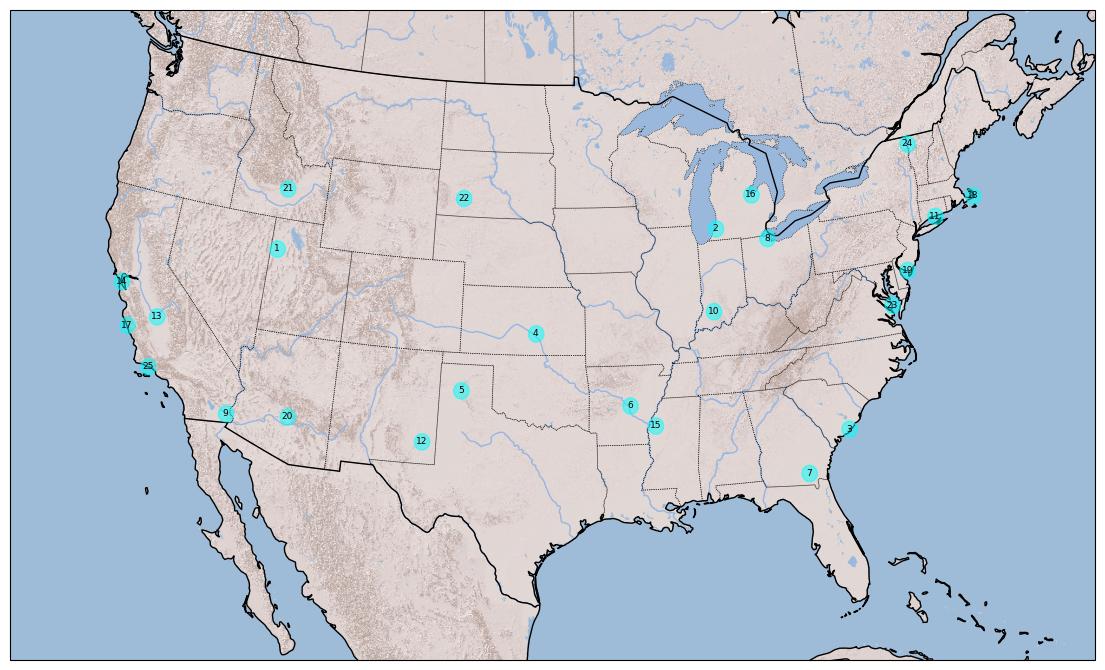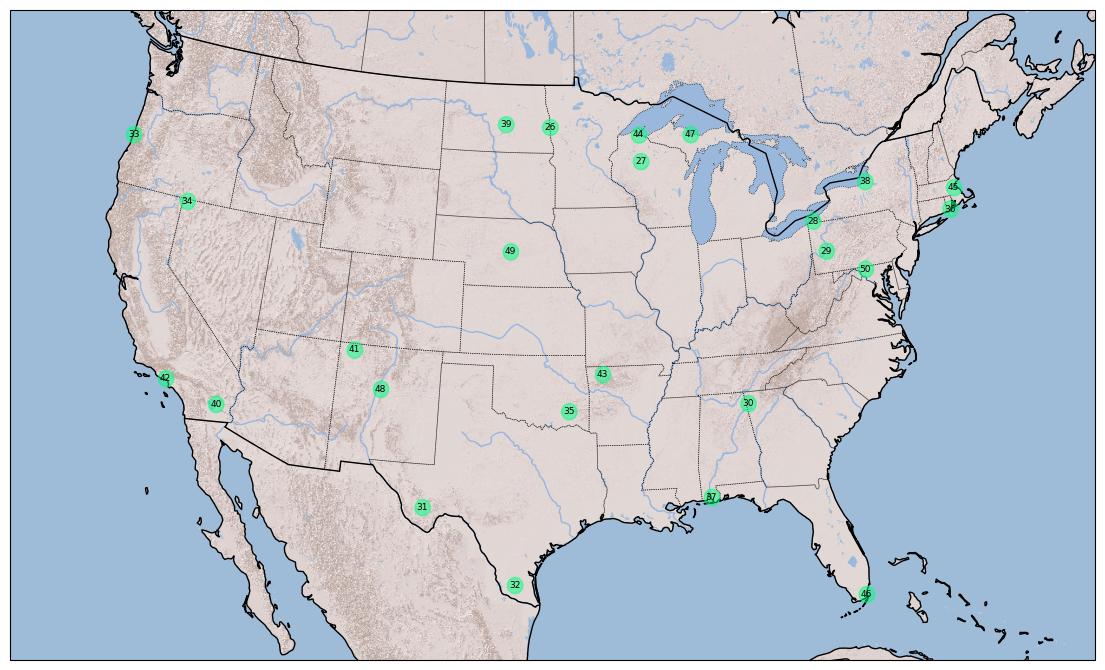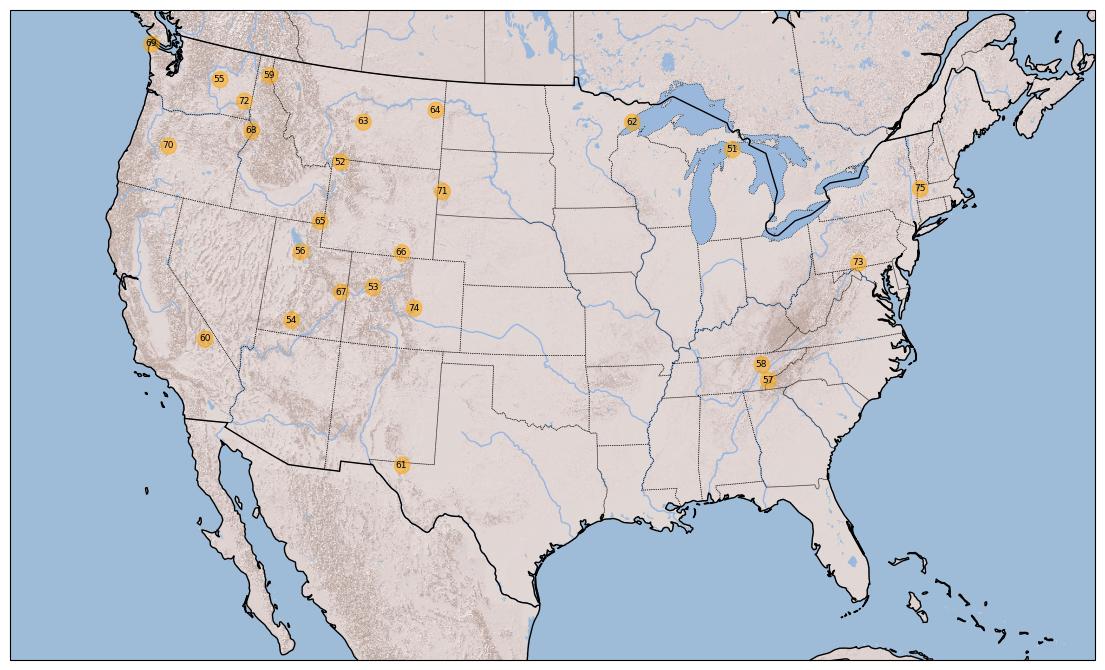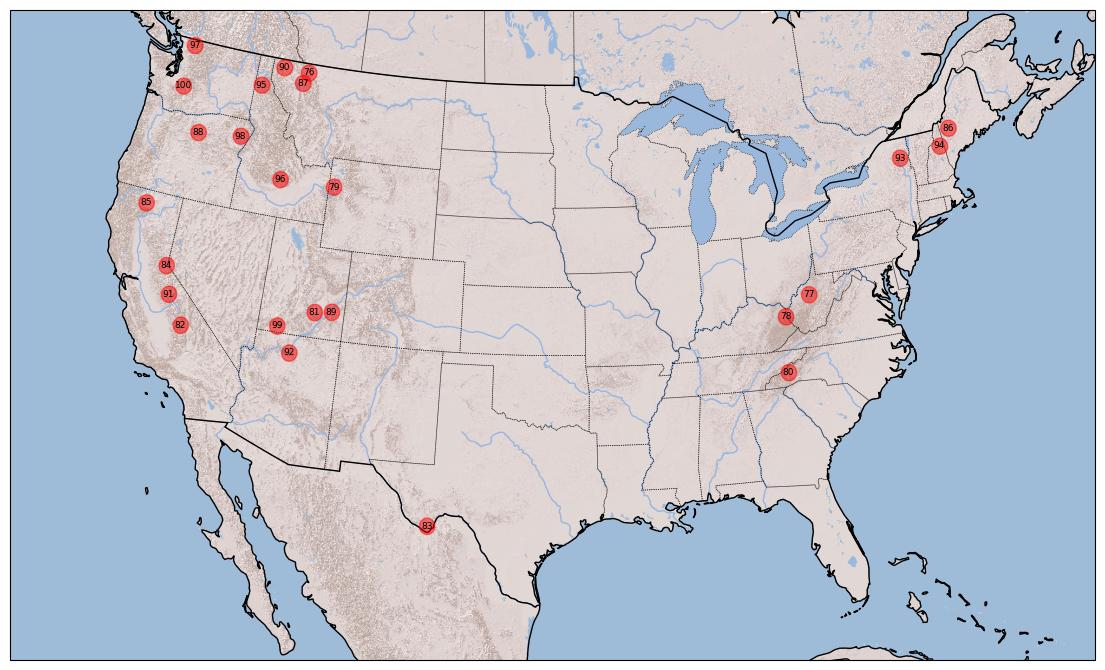

The RASPNet dataset consists of 100 realistic scenarios compiled over a variety of topographies and land types from across the contiguous United States, designed to reflect a diverse array of real-world environments
Within each scenario, RASPNet consists of 10,000 clutter realizations from an airborne radar setting, which can be utilized for radar algorithm development and evaluation. RASPNet intends to fill a pressing need in the availability of a large-scale, realistic dataset that standardizes the evaluation of adaptive radar processing techniques

Each realization consists of I and Q radar data generated synthetically using the high-fidelity, site-specific, physics-based RF Modeling and Simulation tool known as RFVIEW
Scenarios ordered by difficulty with respect to baseline scenario
A complete description of the RASPNet dataset is available here:
Technical Paper ![]()
The RASPNet Complex-Valued Neural Network (CVNN) benchmark comprises feature-label pairs pertaining to five scenarios from RASPNet. The train and test features for each scenario consist of radar return data matrices, which are divided into real and imaginary components. The labels comprise the ground truth target locations for these data matrices.
Public CVNN data are available for immediate DOWNLOAD.
The RASPNet EXAMPLES benchmark comprises feature-label pairs pertaining to five scenarios from RASPNet. The features for each scenario consist of heatmap matrices of the NAMF test statistic. The labels comprise the ground truth target locations for these heatmap matrices.
Public data examples are available for immediate DOWNLOAD.




Scenario samples are available for immediate download:
Basic Scenarios |
Intermediate Scenarios |
Challenging Scenarios |
Eye-watering Scenarios
To request any of the complete scenarios, please send an email to sdms_help@vdl.afrl.af.mil
Include RASPNet and which scenarios you are requesting.
The data can be copied to a user-provided hard drive.
Data can only be shipped to US addresses.